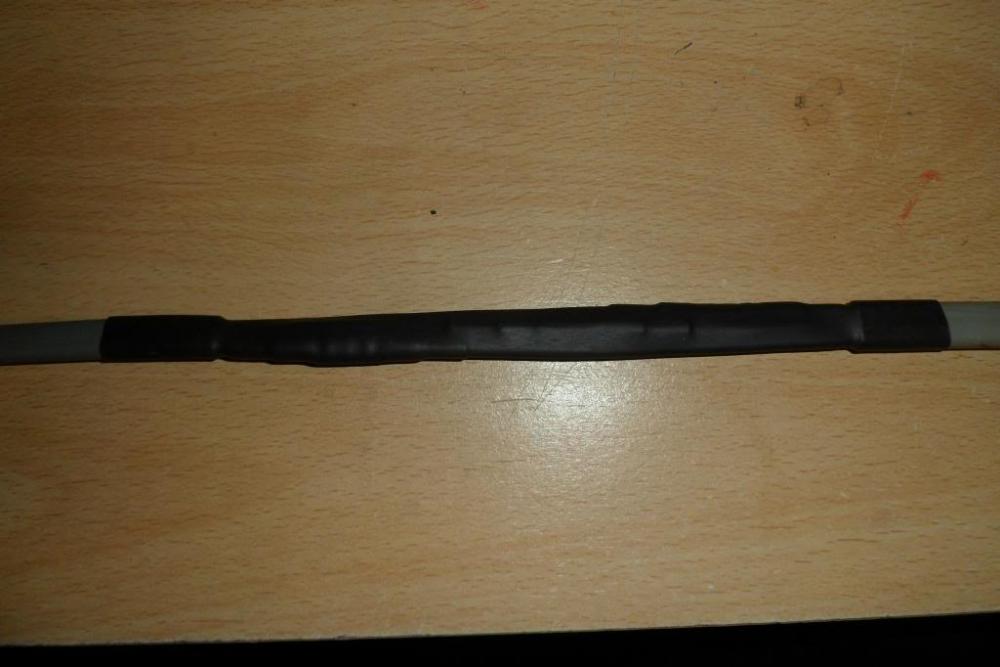Leaderboard
Popular Content
Showing content with the highest reputation on 02/11/18 in all areas
-
The RC concrete box was something of accident as we needed egress from basement to meet regs, could have made it smaller (it's decoupled from the basement itself) but thought it would have looked a bit odd. We decided to make a feature of it with a sunken deck and then the penny dropped that we could put RWH under that. I'd guess that by the time you've excavated the hole, got rid of the muck, poured a slab, designed (SE) & built walls capable of withstanding the pressure exerted by the ground etc, you'll have paid for a 4000 underground tank many times over. If you're not connecting to the house then you can forget much of the expensive gubbins. Get one of these and a submersible pump. You'll need to ensure that all your roof drainage meets at a single point to feed your tank through a suitable filter to screen out gunk. Your tank will also need to overflow to a soakaway (where your rain water would have gone anyway). You'll want surface water, from aco drains, to go straight to the soakaway. Allow for power to the tank for the pump. Once hooked up, our 4 1000l IBC tanks filled in a single day of heavy rain...2 points
-
This could be one for a Planning Consultant, one who has won previous similar local PPs. And consider whether you will be willing to Appeal, and if so make sure the budget is there if yes ... for whichever type of appeal you would consider.2 points
-
I am having the same naming battle. Our council want £150 to register it, so I just ignored that. I chose a house name, that matched with the theme of other names in the area, checked there were no other houses nearby using the name, and checked I could register a domain name of the house name. I have no trouble getting post delivered here. No problem with utilities (the lecky still have it on their database as "land 30 metres east of (next door neighbours house name)" so had to enter it manually. I thought it would come to a head when we moved into the static caravan and started paying council tax. But no there were no issues. The local council now confirm it is on their address database. But it is still not on the Royal Mail postcode database. I have spoken to them, but they will only add it when the council inform them, and it appears that would cost me £150 just for the council to convey a simple bit of information to RM. There is something about the cost for a council service has to reflect the actual cost of providing that service. Well £150 would pay a staff member for a whole day, so clearly in this case the fee is too high. So I continue to avoid it. Now if they would offer me the service at a more reasonable say £50 I would fill in their form. But at the moment I see no pressing need to do so. It would not surprise me now if I tried, they would say "sorry that name is in use....."2 points
-
Just to fully wrap it up, I wasn't drunk, just tainted slightly.1 point
-
Sydenhams are brilliant, they became my go-to BM. I used the Salisbury branch a lot, and the guy I got to know there always tried to price match, even when I'd got prices from on line suppliers. The only time they couldn't price match was with stuff from Paving Direct, as they said they couldn't buy in stuff like Bradstone pavers for the price that Paving Direct were selling them for. The other good thing about Sydenhams is that they seem to have the best delivery drivers around. We had no problems at all with deliveries from them, whereas pretty much everyone else delivering to us cocked up in one way or another.1 point
-
Reminds me of the time I had to replace a hand dryer. I went to the board, turned off the breaker labelled "gents toilet hand dryer" A groan came from an adjacent office as I had killed a dozen pc's. And the hand dryer was still on.1 point
-
6000 litre even cheaper https://www.tanks-direct.co.uk/water-tanks/underground-tanks/plastic-underground-water-tanks/6000-litre-underground-water-tank-bt2021.html1 point
-
The walls will likely be lime plaster. A biatch to get rawlplugs to stay in sometimes! The ceilings I'm guessing lath & plaster (maybe some walls too).1 point
-
That's sad but I totally get the sudden allergy to things, it's not just joints that mess up as the years tick on!! I am ADD so have a natural go-go-go in me that never wants to stop-stop-stop but my body gets to a certain point as says FFS NO MORE! and I end up walking like a 98 year old with soiled knickers for 24 hours while I heal!!! Youth is SO wasted on the young!1 point
-
So am I, but I also have a not so little Jiminy Cricket who will let me know in no uncertain terms when I am moving in the Pandora direction so in this case my caution gets the upper hand.1 point
-
You need to consider what your position would be were your site to be excluded from the LDP. And it was then brought into force.1 point
-
Be careful if going for outline planning (actually called Planning In Principle in Scotland). If you don't provide many details, you may find unwanted conditions attached. e.g when I did my PIP application, I didn't give much details about the house and as a result it came back with a condition that the roof must be done in natural slate. I later managed to get chat changed to a particular concrete tile that has a bit of a slate like finish. If I had specified all the finishes I might have avoided that. The advantage of PIP is it is usually much quicker and you don't need lots of expensive detailed drawings. it is the normal route if someone is planning to get permission then sell the plot. In my case it was to establish the principle of building a house on the plot before I bought it.1 point
-
I'd just get an application in, using the info you have now, and deal with anything else that comes in as the planning process proceeds.1 point
-
Me too. That's as clear an indication as I've seen that they would like to see this brownfield site put to some useful purpose.1 point
-
Given that positive statement, I would proceed with a planning application.1 point
-
I was peripherally involved in creating the Neighbourhood Plan for the village where our old house is, and this included identifying sites that could be developed to meet local housing needs, and all of these sites were outside the development boundary. The Neighbourhood Plan was written by the village, with everyone having a chance to contribute, both by questionnaire and by meetings in the village hall, and was then agreed by the local authority and became an intrinsic part of the local development plan. As such it pretty much guarantees that new proposals for development of the identified sites would not face the usual problem of having to argue the specific point as to why development should take place outside the defined development boundary. The odd thing was that the Neighbourhood Plan has a fair bit of clout when it comes to planning, but doesn't actually change the existing development boundary line, it just gives a reason to develop outside it in certain areas.1 point
-
Have you actually tried a planning application? Our site was perhaps a but similar in that it was a vacant empty plot just overgrown with scrub. It sat between 2 existing houses. A few years ago when the council were updating their local plan, the then owner tried to get is zoned for housing development and failed. (There is already a piece of land at the top of our road with a now derelict wooden former restaurant that is zoned for housing on the local plan) But in spite of our plot failing to get zoned for housing at the last local plan update, it did get planning. Our local plan has a presumption against "new housing in the hinterland" unless it meets one of 3 conditions. One of those is an infill plot between houses in an established development, so ours passed that and got planning, even though it had no designation on the local plan.1 point
-
Sit tight and wait for the replies to come in. There's usually is a way out and a few heads are better than one1 point
-
It's a lot easier to use the pre-insulated pipe that's made for the purpose, like this: https://cpv.co.uk/product-range/pre-insulated-pipe/hiline-flex-pe-xa (I'm not recommending this one, it was just the first website with a photo I could quickly find). You won't get 22mm pipe to bend around a standard bend, so I suggest you have a think about the possible solution I suggested above. You can get 1.5m long large bore flexis, I have them connecting our pressure vessels. I'm certain that two of those, wrapped with Armaflex, would get around that bend OK.1 point
-
Hello and welcome! I'm currently touring the Small Isles with very limited Internet access. We bought ex-Scottish Water tanks - have a look at my blog in link below. Back next week and will try be more helpful! Jamie1 point
-
I'm inclined to take them off to put the bevel on, but sadly I haven't yet finished the table saw, it's yet another unfinished project waiting for me to get enthused enough to resurrect it. Willows grow like weeds here, I'm forever pulling willow saplings out of everywhere, including the lawn. We're right by a stream, that has willow growing all along it's banks, so our garden gets a constant flow of seeds. What's amazing is how quickly a seed grows into a sapling that has roots going down to the centre of the earth. Digging out any sapling more than a couple of feet high is a major job, as the main root will probably go down as deep as the sapling is high.1 point
-
The lowest price I could get was - EPS 300 at £12.21/m2 EPS 100 at £5.09/m2 The supplier was Varley Insulation, talk to Graham (the owner).1 point
-
[Apologies for those that got a half-complete notification - I somehow submitted without having finished] Thanks everyone for the welcome, and indeed the comments/suggestions. Addressing some of the key points raised: Terminology - Yes, if I've found one thing with MVHR it is the variety of terms in use often interchangeably! I am seeing manifolds and plenums being swapped around; and valves, terminals, grilles, vents (and now 'ceiling holes'! ) all being used. Here am indeed talking about, well, the ceiling holes (that's arguably the least ambiguous term given its uniqueness!) System Type - I am intending on using the HB+ system with the central manifold-based flow restrictors (based on your previous discussions/experiences with them JSHarris) and accept that initial balancing is going to be a bit of pain. Having performed a 20-stage iterative balance of our wet central heating system, taking around 6 hours to complete, I've got the determination (and OCD?!) to see something like this through though! It may well end up something of a hybrid system of different suppliers where possible/compatible and I *might* make my own manifolds to suit my specific needs (and budget). Something worth mentioning is that this will be a retrofit installation and whilst it will be performed alongside a new extension it does mean I can afford to be a bit more focused on some of the arguably less(er) important aspects! As you say, Ian, a complete self-build must mean any available time is highly competed for and so I could well understand that subtleties of vent aesthetics are justifiably low down the list! The fact that I am retrofitting means that wherever possible I shall be wanting to install from the below-ceiling side (just to be clear: the ducting will be in the ceiling void; it is just which side I'll be primarily working from!). For this reason I may well end up fabricating my own plenums that I can fix from beneath using a 63/75mm-to-125mm adaptor and 125mm right-angle rigid bend as all plenums I've seen are very much fit-from-above or at first fix. I think I'll be able to do all this from underneath (I've done similar before with an inline shower extractor fan) given the right terminal type (particularly the ones with a collar that is screwed to the ceiling hole edge. The Conus air valve is not one I'd come across JSHarris but could be just the ticket given how slimline it is and depending on how easily I can attached it to a non-HB+ plenum. Am I right in assuming that there's no distinction between supply/extract with that particular type? The type Lizzie has also sound very interesting, but my desire for (expensive) aesthetics is unfortunately sometimes countered by my thrifty-Northern roots so I might have to avoid looking too much into that option!1 point
-
I'd advise contacting them ASAP, with a list of points as to why it does not meet the rateable hereditament tests in the case law quoted in the links in this post: If you're methodical you should have no problem in making the case that it does not meet the legal requirements, but I suspect you will be dealing with people who are inflexible and not particularly well-versed in the law. Certainly the first person I spoke to at the council was pretty aggressive and bullying, and passed me on to her manager. The manager didn't understand the law at all, and I managed to get her to refer my points to their legal department, and quoted the relevant items of case law. The moment their legal eagle was made aware that there was no potable water on site, the whole thing just went away, with a request that I call them when the house met the legal requirements to be habitable. They will try it on, as these people have learned that being bullying and aggressive, with the authority of the council, makes most people back away. The hardest part for me was staying calm and civil when dealing with them, as I was steaming mad. I can clearly remember being on the phone to them at the top of our lane (there's no signal at the house), finishing the calm conversation with one of the morons and then shouting and swearing with pent up rage. The lady walking her dog that passed me at that moment just smiled at me and said "was that telephone call a little tiresome?". Calmed me down better than a bottle or two of wine.........1 point
-
I was very, very tempted to set up booby traps after catching the Council snooper on camera. I don't often get really angry, but the Council managed to get me seething for weeks by doing this. The pompous woman I spoke to on the phone, that tried to justify a member of her staff breaking into our property, with no PPE on, and ignoring all the warning and keep out signs, by telling me that lots of builders tried to avoid paying Council Tax so they had a duty to check up on every new build regularly. The implication was that she thought I was deliberately avoiding paying the tax, even though we were so far off completion that I hadn't even started to think about it yet. Anyway, they lost out on around 18 months of Council Tax just because they put my back up so much that I very deliberately (and perfectly legally) kept the house in a state where it could not be declared a rateable hereditament, just out of spite.1 point
-
This was to demo joining two bits of T&E, 2.5mm new & old in this case, (note the cpc (earth) might be smaller): Dead easy on a bench, fiddly in a wall, even getting the crimping tool in of course: Strip the sheaths: Stagger the joints so you don't get the "python after a large meal" bulge in the middle. The join needs to be long enough so you can slip the heatshrink on and slide along far enough to do the crimping and ideally shrink the crimp without affecting the tubular head shrink: Strip the ends: Heatshrink slipped on BEFORE you crimp! Crimp heat shrunk - has glue in that melts and sticks to the core: Green / yellow sleeving on. SOMETIMES as said above you might want a smaller crimp for the cpc: Cpc done: All neatly crimped, old colours for the heatshrink 'cos I've got it: Heatshrink over the top: Chuck it in the wall and get plastering! Similarly it could be soldered but make damn sure you get no sharp wispy bits of solder that might poke through the heatshrink!1 point
-
Funnily enough, I've been looking at this. So far I've done around a dozen (free) thermographic reports for local people, keen on finding ways to reduce their energy bills. Not hard to do, but it does require the right conditions (cold and dry weather with a heated house) to get the best images from the thermal imaging camera and so produce a useful set of recommendations. The worrying thing was going around a local new build estate. A planning condition imposed meant that these were all supposed to be built to the old Code for Sustainable Homes Level 4. A wander around shows loads of missing wall insulation, cold bridging around doors and windows and a generally poor level of performance. I doubt they even met building regs, let alone CfSH L4, in reality. Thermography offers a pretty foolproof way of demonstrating whether a builder has, in fact, built a house to the claimed thermal loss standard, and I think the more it's used the better informed buyers will be.0 points




















